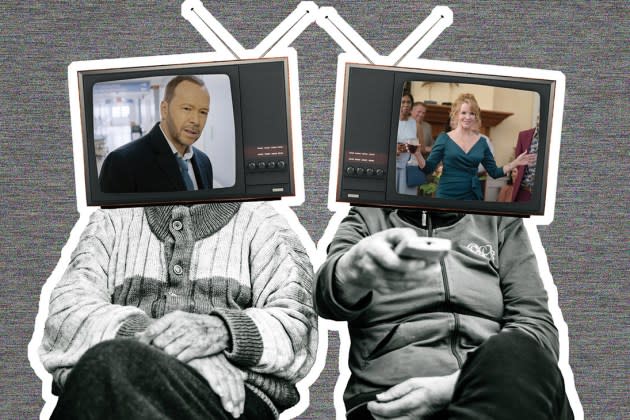TV Viewers Are Aging. These Shows Bring In the Oldest Audiences

For decades, TV shows lived and died by their ratings among adults 18-49, the demographic sweet spot for advertisers to reach a wide swath of potential customers with money to spend but without the lifelong habits about how to spend it. That’s not really the case anymore as an emphasis on engagement and reach in the streaming era, along with a focus on precisely targeted ads, means chasing demos is even more data-driven than it was in the pre-streaming age. That shift aligns with the reality that, thanks to streaming and the relentless pull of algorithmic content apps, only a small part of a given show’s on-air audience falls into the once coveted demo.
The median age for a network primetime viewer long has been above 50 — this year, it comes in at 64.6 for the five English-language broadcast networks. Cable is much the same, with such networks as Bravo skewing a little younger (its median viewer age is 56), while the Big Three news channels’ average viewer is about 69.
More from The Hollywood Reporter
Only one English-language show that aired on a broadcast network this season — Bob’s Burgers on Fox — had a median age (where half a show’s viewers were younger and half older) below 50, and not by much: The animated series’ median viewer age was 49.5. (All numbers in this story are through May 19, three days before the end of the September-to-May TV season.)
Fox had the lowest median age, 58.1, of the five networks, thanks in good part to its animation roster: Along with Bob’s Burgers, Family Guy (median age 51.5), The Simpsons (51.6), The Great North (52.3) and Krapopolis (52.6) make up the five youngest shows in primetime this season.
At the other end of the spectrum, CBS’ Blue Bloods had the oldest median viewer of any primetime series, at 73 years old, as well as 11 other shows with median viewer ages over 70. Given that, it’s not surprising that CBS has the oldest primetime audience among broadcasters, with a median age of 67.8, two-plus years older than ABC (65.5). NBC (64.9) skews a bit younger than the formerly youth-chasing CW (65.2). . (ABC’s average doesn’t include its Monday Night Football telecasts, which would likely bring the median age down a little.)
CBS also has the largest primetime viewership, and thanks in part to that bigger tent, it also had the two highest-rated shows among adults 18-49 this season, not including live sports, in Survivor (1.37 million viewers in that age range) and Tracker (1.32 million). (No surprise: The No. 1 show in literally every demographic in 2023-24, from kids to people over 50 and among men and women of all ages, was NBC’s Sunday Night Football.)
Nielsen’s linear ratings don’t include streaming. If they did, those median age numbers would come down some, as streaming viewers tend to be an entire generation younger than on-air viewers of the same program. Abbott Elementary’s median on-air viewer at ABC is about 61 years old; for streaming, the median viewer age is 36. Law & Order: SVU’s streaming viewers on average are about 20 years younger than the 64.8 median age for those who watch on NBC. And so on.
Streaming of scripted network series can account for 40 percent or more of a show’s seven-day audience. ABC can note that Abbott routinely triples or quadruples its 18-49 rating after a few days of multiplatform viewing, and CBS likewise isn’t shy about noting that Tracker (with a median age of 68.7 on linear) hits about 19 million viewers on a longer-tail, five-week measurement of all viewing.
This story first appeared in the May 29 issue of The Hollywood Reporter magazine. Click here to subscribe.
Best of The Hollywood Reporter

 Yahoo News
Yahoo News 